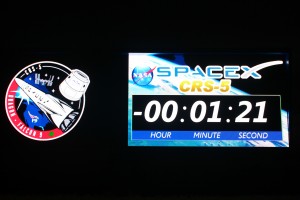
The conditions for launch were perfect early Tuesday morning. With calm winds and ideal temperatures, the countdown ticked down to the 6:20 a.m. launch window.
Weather conditions were at 90 percent go, according to NASA.
However, with 1:21 until launch, a hold was called and the launch was aborted.
According to NASA, a thrust vector control actuator for the Falcon 9’s second stage failed to perform as expected, resulting in a launch abort.
What does this mean for SpaceX? They now have three days to prepare for the next launch.
Unlike the previous Orion launch last month, there is no spanning launch window. If the launch does not occur at the specified time, they must wait until the next window occurs.
With the passing of today’s window, the next available launch time is 5:09 a.m. on Friday, 1/9.
SpaceX has not stated if a launch will occur at this window yet, as the issue must be addressed and resolved before another attempt at a launch can happen.
Until then, the Falcon 9 rocket and Dragon spacecraft will rest at the pad while the issues are diagnosed and resolved.
This is SpaceX’s fifth resupply mission for the International Space Station, after a $1.6 billion contract with NASA.
In addition to the launch, SpaceX is also attempting their first-ever precision landing.
Their goal is to land the Falcon 9 rocket on a drone ship, which creates a floating landing pad. This is new procedure, and SpaceX lists the probability of a successful landing 50-50.
NASA and SpaceX are currently investigating the actuator, and will attempt to correct the problem during the launch procedure.
Once that’s completed, a new launch date can be finalized. Until then, Dragon spacecraft and Falcon 9 rocket will be spending at least the next three days on the ground.






